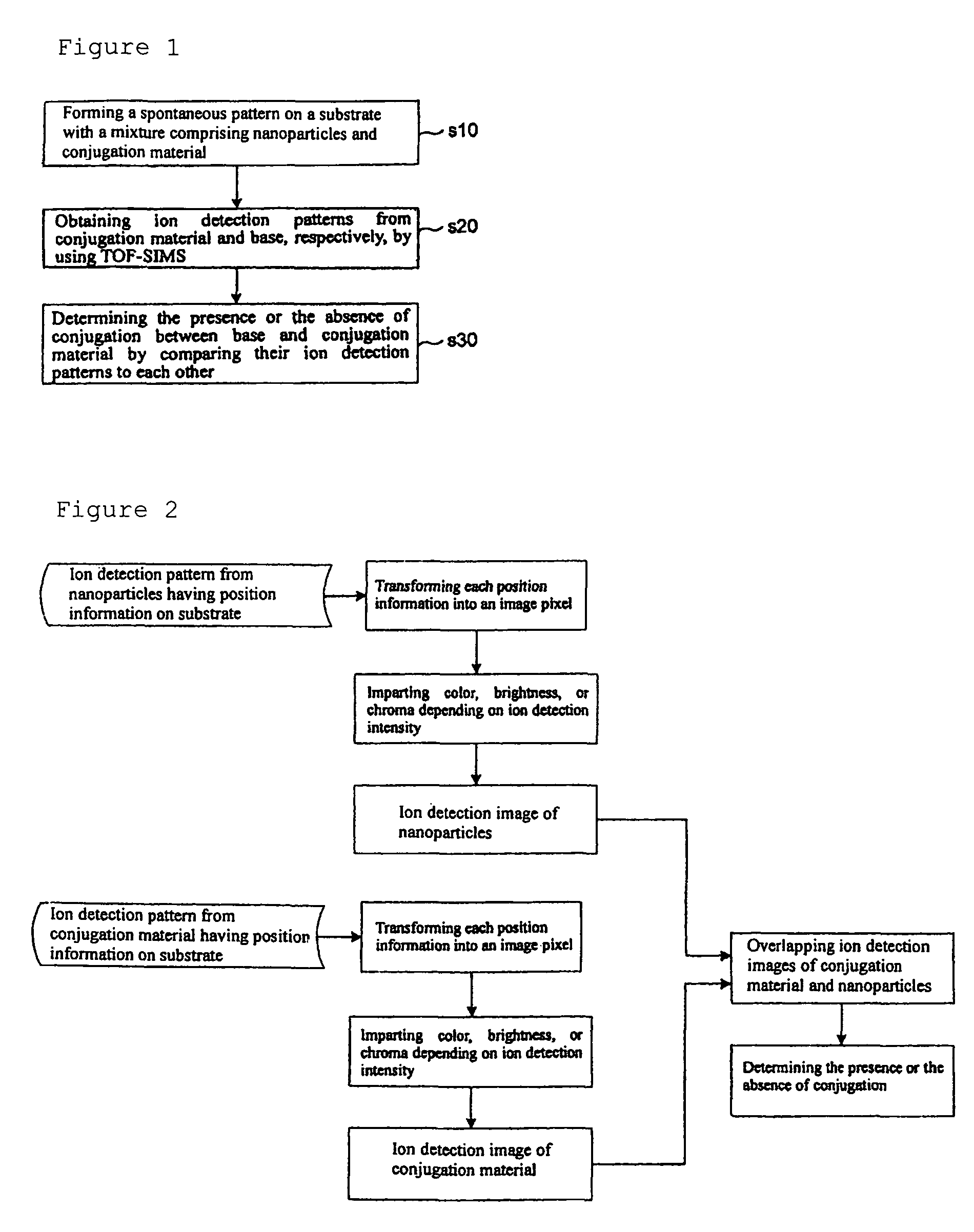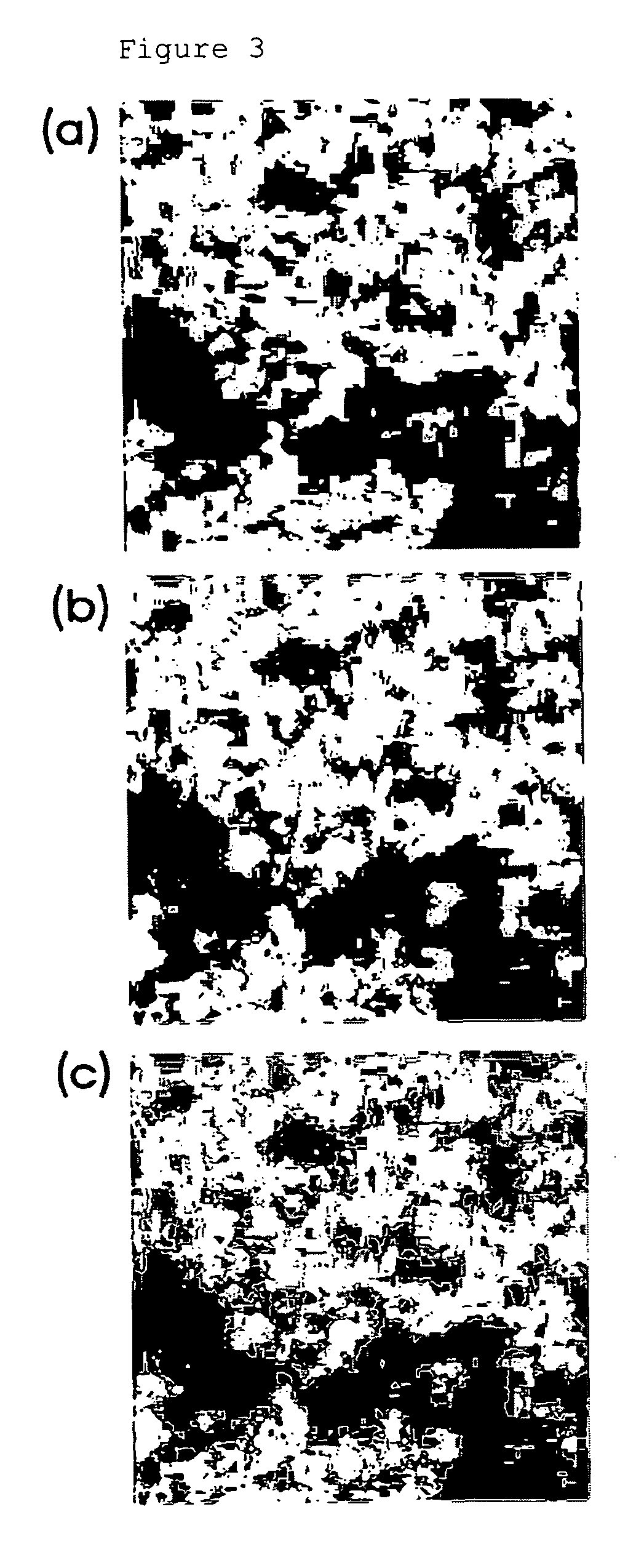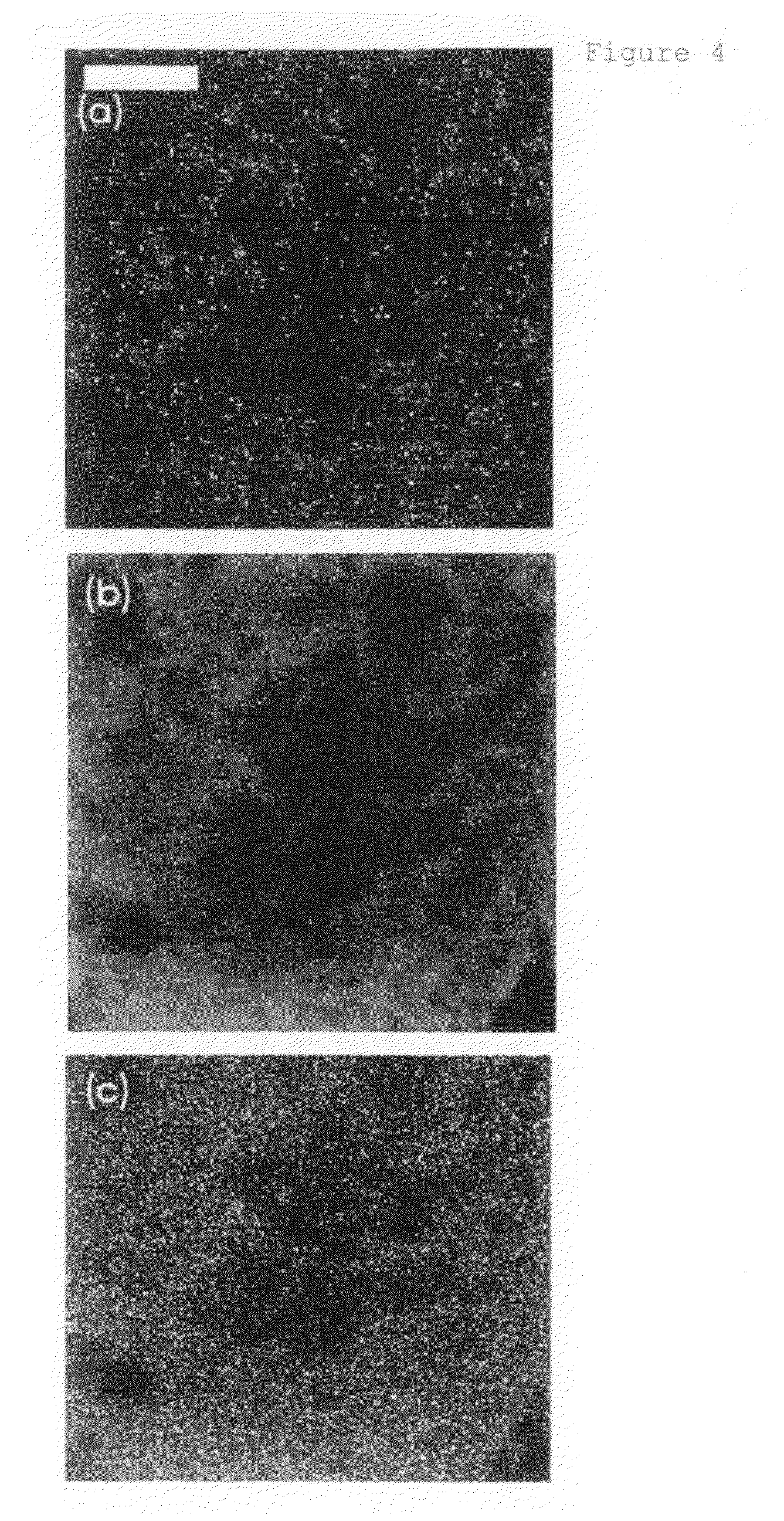Evaluation method of organic or bio-conjugation on nanoparticles using imaging of time-of-flight secondary ion mass spectrometry
a secondary ion mass spectrometry and organic or bio-conjugation technology, applied in mass spectrometers, instruments, chemical indicators, etc., can solve the problems of inability to apply to an ultrafine array system, chemical instability of fluorescent materials composed of organic compounds, and high laser cost, so as to achieve the effect of determining the progress of conjugation
- Summary
- Abstract
- Description
- Claims
- Application Information
AI Technical Summary
Benefits of technology
Problems solved by technology
Method used
Image
Examples
Embodiment Construction
[0072]In view of the following examples, the method for evaluating conjugation between materials using TOF-SIMS according to the present invention will be explained in detail. The following examples are given to fully explain the spirit of the present invention to a person skilled in the art. Thus, the present invention is not limited to the following examples. Rather, it can be embodied in other various forms and many variations and modifications of the present invention will be evident to a person having ordinary knowledge in the pertinent art.
[0073]CdSe—ZnS core-shell quantum dots comprising CdSe core and ZnS shell were produced and by using TOF-SIMS the formation of a core-shell between CdSe and ZnS in CdSe—ZnS core-shell quantum dots (i.e., conjugation between CdSe and ZnS) was determined and evaluated. In addition, the presence or the absence of organic ligand which can be produced during the manufacturing process of CdSe—ZnS core-shell quantum dots and conjugation between the...
PUM
| Property | Measurement | Unit |
|---|---|---|
| total volume | aaaaa | aaaaa |
| ionic current | aaaaa | aaaaa |
| area | aaaaa | aaaaa |
Abstract
Description
Claims
Application Information
 Login to View More
Login to View More - R&D
- Intellectual Property
- Life Sciences
- Materials
- Tech Scout
- Unparalleled Data Quality
- Higher Quality Content
- 60% Fewer Hallucinations
Browse by: Latest US Patents, China's latest patents, Technical Efficacy Thesaurus, Application Domain, Technology Topic, Popular Technical Reports.
© 2025 PatSnap. All rights reserved.Legal|Privacy policy|Modern Slavery Act Transparency Statement|Sitemap|About US| Contact US: help@patsnap.com



